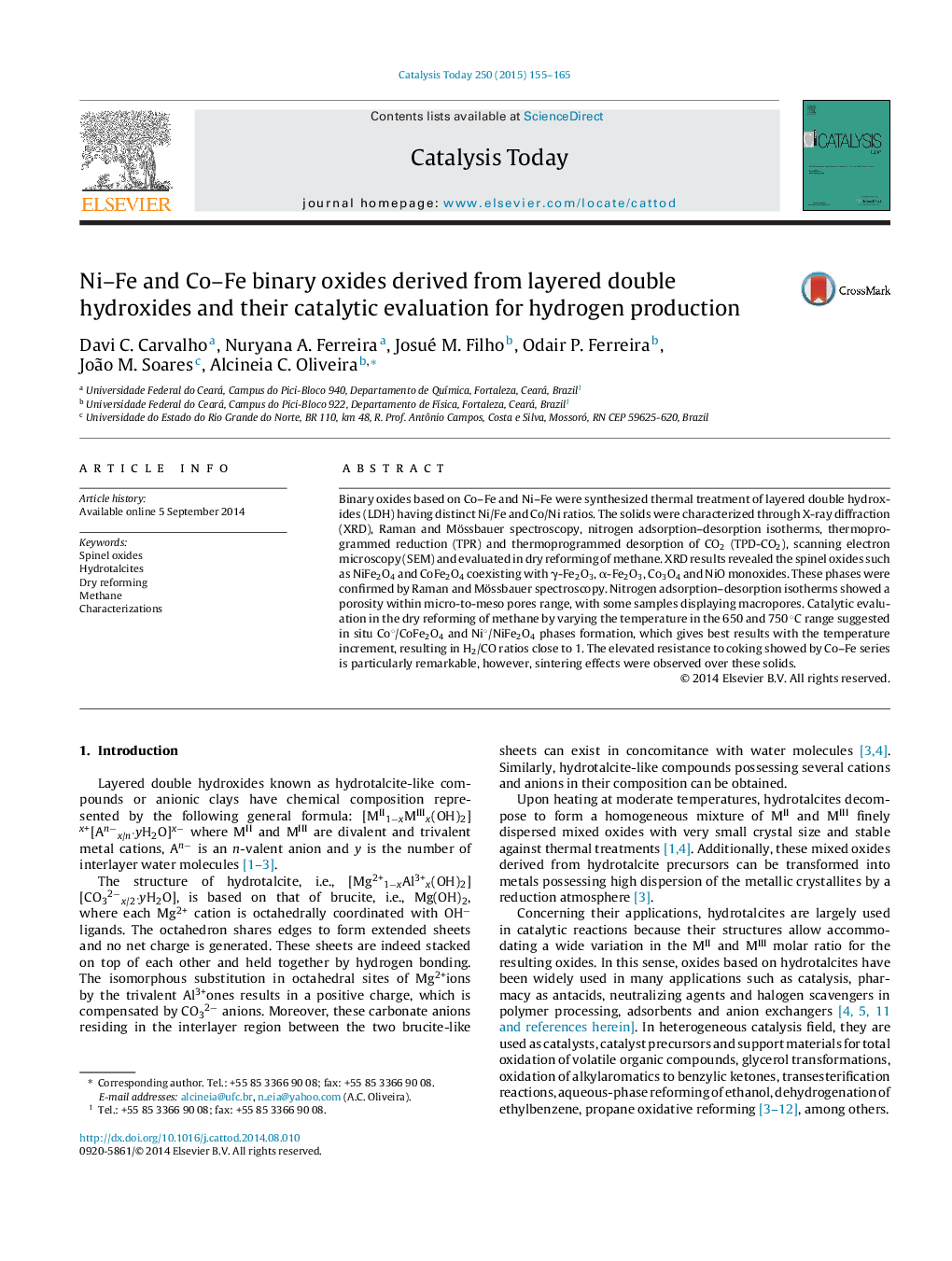| کد مقاله | کد نشریه | سال انتشار | مقاله انگلیسی | نسخه تمام متن |
|---|---|---|---|---|
| 53927 | 46989 | 2015 | 11 صفحه PDF | دانلود رایگان |
• Co–Fe and Ni–Fe synthesized from layered double hydroxides (LDH) with distinct Ni/Fe and Co/Ni ratios.
• Calcination produced NiFe2O4 and CoFe2O4 coexisting with α-Fe2O3, γ-Fe2O3, Co3O4 and NiO monoxides.
• Solids possessing porosity within micro-to-meso pores range, with some samples displaying macropores.
• Catalytic evaluation in the dry reforming of methane formed in situ Co°/CoFe2O4 and Ni°/NiFe2O4 phases.
• Elevated resistance to coking showed by CoFe series is particularly remarkable, however, sintering effects were observed over these solids.
Binary oxides based on Co–Fe and Ni–Fe were synthesized thermal treatment of layered double hydroxides (LDH) having distinct Ni/Fe and Co/Ni ratios. The solids were characterized through X-ray diffraction (XRD), Raman and Mössbauer spectroscopy, nitrogen adsorption–desorption isotherms, thermoprogrammed reduction (TPR) and thermoprogrammed desorption of CO2 (TPD-CO2), scanning electron microscopy (SEM) and evaluated in dry reforming of methane. XRD results revealed the spinel oxides such as NiFe2O4 and CoFe2O4 coexisting with γ-Fe2O3, α-Fe2O3, Co3O4 and NiO monoxides. These phases were confirmed by Raman and Mössbauer spectroscopy. Nitrogen adsorption–desorption isotherms showed a porosity within micro-to-meso pores range, with some samples displaying macropores. Catalytic evaluation in the dry reforming of methane by varying the temperature in the 650 and 750 °C range suggested in situ Co°/CoFe2O4 and Ni°/NiFe2O4 phases formation, which gives best results with the temperature increment, resulting in H2/CO ratios close to 1. The elevated resistance to coking showed by Co–Fe series is particularly remarkable, however, sintering effects were observed over these solids.
Figure optionsDownload high-quality image (114 K)Download as PowerPoint slide
Journal: Catalysis Today - Volume 250, 15 July 2015, Pages 155–165
